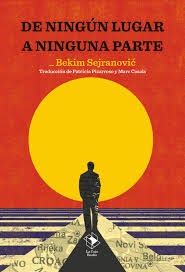About the book:
Margaret Laurence’s masterpiece, the great figure of Canadian literature along with Alice Munro, Margaret Atwood and Robertson Davies. “Who would understand me, even if I tried to speak? I am over ninety years old, and this figure seems somehow arbitrary and impossible, because when I look in the mirror, behind the shifting shell that houses me, I see Hagar Currie’s eyes, the same black eyes as when I first had memory and consciousness of myself. I have never worn glasses. I still have pretty good vision. The eyes are the thing that changes the least. “John’s eyes were grey, and even towards the end they always seemed to me to be the same as when I was a child, with that hidden longing, as if I half believed, against all reason and knowledge, that something splendid was going to suddenly happen.” Laurence recounted in his correspondence with the writer Adele Wiseman the genesis of the construction of the charismatic protagonist of The Stone Angel during the creative process of the novel: “Some day I would like to write a novel about an old woman. I am increasingly interested in old age: the myriad ways in which people deal with it, some pretending it doesn’t exist, others terrified by each physical deterioration, not seeing themselves capable of facing the final moment; some trying to find a balance between the demands of the routine of this life and the increasing need to gather the threads of the spirit together so that we are ready when the end comes, whether it turns out to be a death or just another birth.” The result is a story in which the Canadian writer pays tribute to the generation of women who lived on the Canadian plains during the first half of the twentieth century. The Stone Angel tells the story of nonagenarian Hagar Shipley, a stubborn and nonconformist woman who lives with her son and daughter-in-law, who, tired of caring for her and about to retire, are thinking of moving her into a nursing home. She, on the other hand, believes that the time has not yet come and while she waits for that fateful day, she remembers her life. Through disjointed memories of childhood and youth, of her role as mother and wife, we will discover how Hagar, unhappily married, had to earn her independence by dint of hard work in a world dominated by appearances and conventions. Her toughness of character, the result of the difficult circumstances she had to live through and the pride and austerity that was instilled in her, has conditioned her life.
*Original content provided by the publisher
Reviews:
«Her absolute relevance, the irreplaceable female voice, the creative blend of memory and imagination in a compelling first-person voice (…) give this book a fundamental place in the literary canon.» Margaret Atwood«She admirably portrays the peculiar and the universal. She is a memorable character and, at the same time, the image of old age itself, with the pain, the exhaustion, the fear and the helplessness, and with the revelation that others wait and wish for it all to end.» Honor Tracy (The New Republic)«It is pure revelation, not imitation. Her skillful use of language makes the reader truly capable of understanding Hagar.» Robertson Davies«An extraordinary classic that remains surprisingly relevant.» Éric Paquin (Voir)
Source: https://algunoslibrosbuenos.com/el-angel-de-piedra


